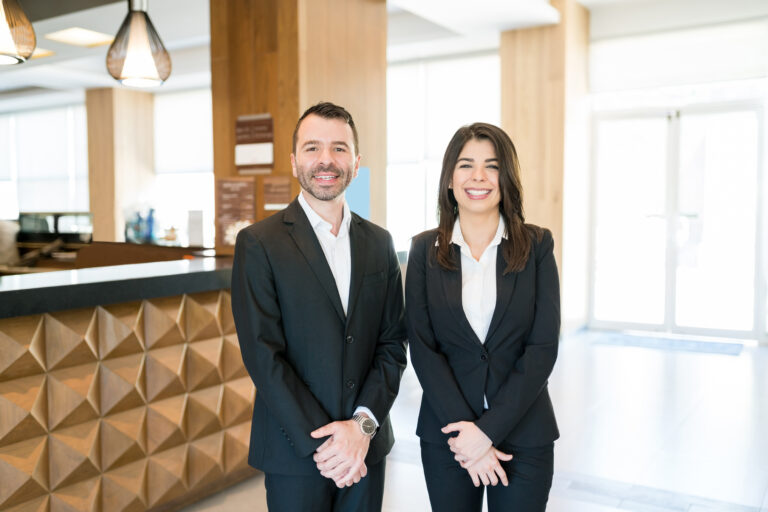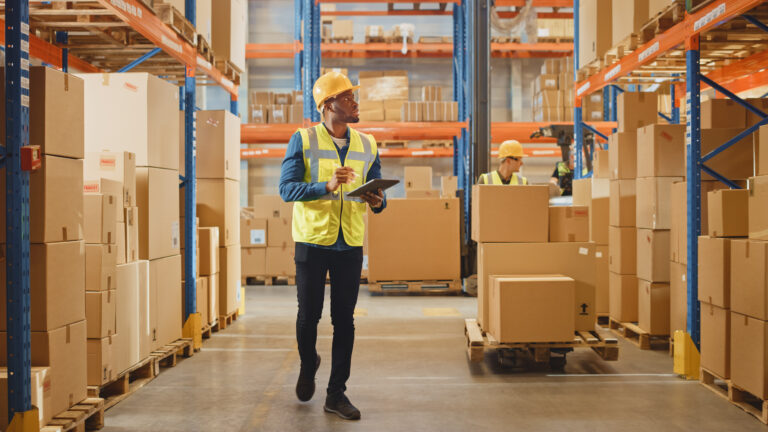
News / Compliance, Featured, Management, Safety, Worker Safety
Mythbusters: Debunking Four Common Hospitality Safety Myths
Workplace safety impacts just about every aspect of hospitality businesses, which makes misinformation and misunderstandings about safety particularly hazardous. In fact, they can lead to a range of unfortunate accidents, injuries, and exposures that can cause real harm and leave your business vulnerable to lawsuits, fines, and bad publicity.
We’ve busted some common myths held by the hospitality industry when it comes to safety. Put your safety IQ to the test.
Myth 1: Safety for Contract Labor Rests Solely on the Staffing Provider.
This is only partly true. While agencies like HSS certainly play an important role in training and preparing our staff to work onsite, the hotels, resorts, and restaurants where they work are also responsible – and liable. Then there is the staff member who must participate in available training, wear the necessary protective attire or equipment, and follow safety best practices through the course of their workday.
“This is probably the biggest myth out there,” said Jay Segovia, Regional Safety Manager at HSS. “Many new clients tend to think that since they have a staffing agency then ‘we don’t need to worry about what they do.’ Our partnerships with clients provide many opportunities for mutual growth and enhanced safety.”
Remember, in the eyes of OSHA, everyone is responsible – including your business.
Learn more about OSHA and access other valuable information here.
Myth 2: Safety Measures are Just About Reducing Workers Comp Claims.
Reducing workers comp claims is important for any business – but that is not the only reason for hospitality businesses to take safety seriously.
Workers in hotels, resorts, casinos, and other hospitality venues should be trained in an array of safety protocols and accident prevention including the handling of dangerous chemicals, prevention of repetitive stress injuries, safe handling of equipment, sex trafficking, and active shooter scenarios. Prioritizing safety helps protect contract workers, staff, and guests alike.
There is also increasing efficiency and reducing staff turnover. A work environment that values the safety of everyone will operate more effectively and will see less of a revolving door. That is vital – particularly in this tight labor market.
Myth 3: The Sole Focus of Safety is Protecting Workers.
Yes, the welfare of your workforce is critical – guest safety and satisfaction is equally important.
So how do safety protocols protect guests? In many ways.
- The proper storage and disposal of cleaning agents and chemicals, for instance, ensures safety and improved air quality for guests and workers alike.
- Proper labels and signage of recently cleaned floor surfaces help to reduce the risks of tripping and falling.
- Protecting guests during fires, earthquakes, severe weather events, or active shooter incidents requires the advanced safety training that HSS provides. “Knowing what to do in the case of emergencies is vital,” said Pablo Landaverde, Regional Safety Manager at HSS. “Everything we have learned and everything we do we share with our clients so they can benefit from our experience.”
Watch the HSS Safety First Podcast
It is crucial that anyone working at your property is trained in proper safety protocols, like seen above. Guest safety impacts satisfaction scores and also protects your property from bad PR and legal action.
Myth 4: Keeping Workers Safe is Time-Consuming and Too Expensive.
Sure, appropriate safety and security training and protocols that are suitable for your facility can take time and resources to establish, but once these are ironed out and rolled out across staff, those investments lessen over-time.
Plus, the expenses and time resources related to keeping staff safe are minimal when compared to the sum of workers comp and liability claims, lost labor, and possible revenue losses due to a safety event.
“Routine tasks aren’t seen as contributing to injuries, but in reality common activities such as bed-making, vacuuming, and mopping are the leading causes of workplace injuries,” said Segovia. “Advanced safety training and on-site observation dramatically improve worker safety.”
Having a staffing partner that can guide your business in identifying safety areas and who will take your established protocols seriously is vital.
Interested in reading more? Download our free eBook Safety First: A Guide to Hospitality Safety. Co-authored by Landaverde and Segovia, it’s a comprehensive look at how HSS works with clients to create a culture of safety for workers and guests.
If you are looking for a hospitality staffing partner that is committed to your success—and ensuring the safety of everyone at your facility, contact our team to discuss your needs.
Staffing solutions, delivered to your inbox.





